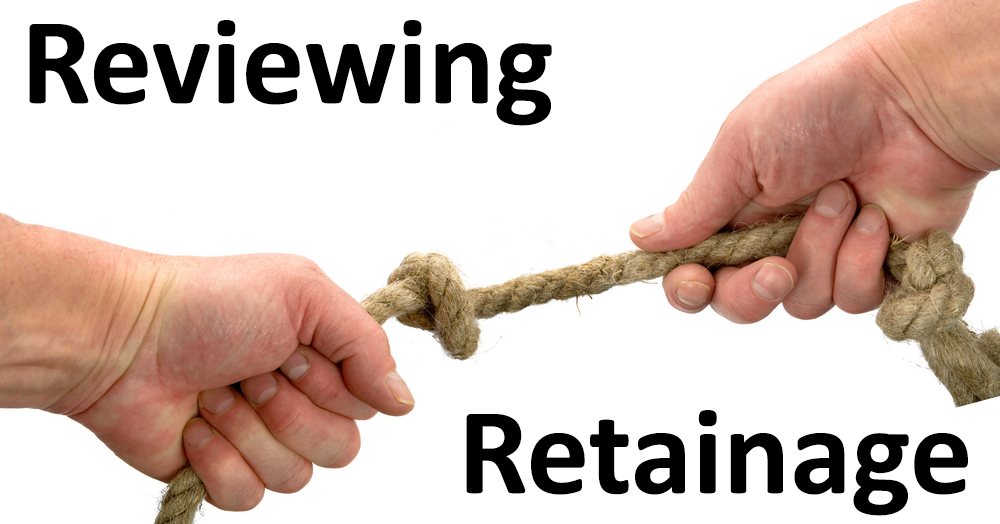
Reviewing Retainage, In Concept and In Practice
Even the simplest construction project involves some degree of risk. Because of this, and the obviously higher degree of risk applicable to more complex jobs, owners will always seek to protect themselves financially. One way they continue to do so is through retainage. As you’re no doubt aware, under the concept of retainage, an owner withholds a percentage of the total contract price until the project is 100% complete to that owner’s standards. Many contractors’ feelings about retainage range from annoyance to outrage. Yet the practice continues, so it’s important to occasionally review how retainage may be affecting your construction company.
Conflict Over Cash
Retainage percentages vary from state to state, as do the timelines on which those funds are released. Contractors generally prefer that owners release all or a significant part of retainage when a project is 50% complete, but many owners hold the retainage until a project is finished.
Over the years, construction associations have lobbied state legislators to limit retainage amounts. Some states responded by capping retainage at certain percentages of the contract price. In addition, there are states that now require that retainage funds be held in interest-bearing escrow accounts.
The issue of interest has been particularly contentious. Owners contend they have no obligation to pay interest on retainage, as the withheld funds are theirs until they’re contractually required to release the money. Contractors, on the other hand, maintain that retainage provides zero-interest financing for projects and that, in an industry where the typical profit margin is between 2% and 5%, retention of up to 10% is quite a burden.
Alternative Ideas
Some in the industry have suggested relying more on surety bonds to replace or compensate for limits in retainage. However, while bonding and retainage are financial tools designed to ensure project completion, they serve different purposes. A surety bond that would be used as a substitute for retainage wouldn’t differ from traditional surety bonds. Surety bonds are more appealing to contractors because they don’t involve holding back progress payments as leverage to prevent default.
Opponents counter that surety bonds don’t give contractors an equal incentive to complete projects.
While retainage provides readily available funds in case a contractor fails to finish a job, they contend that a surety bond isn’t a sure thing if a project goes sour. In fact, a surety bond may not pay out until after extensive litigation. As a result, project completion may be long delayed.
Some have suggested increasing or improving periodic inspections of jobsites to replace retainage altogether. These enhanced inspections would help determine whether work is being completed in compliance with contract documents.
Negotiating Tactics
The good news: You have some leverage in setting the ground rules for retainage and negotiating favorable contracts. For starters, try quoting two prices — one if retainage is held, the other if it’s not. Doing so may help the owner better appreciate the financial burden retainage can impose.
In addition, consider stipulating that retainage be handled consistently throughout a project rather than differently at various job stages. You might also propose a fair rate of interest on all retained funds and contract language allowing interest to accrue on funds not released in a timely manner.
Think diplomatically, too. If collecting retainage is too often a problem, you might need to revise or enhance your construction company’s approaches to customer relationship management. That’s not to blame your business for the difficulties, but sometimes opening up better lines of communication with owners early in a project and interacting in different ways can prove helpful.
Looking For Ways
It’s unlikely that we’ll see retainage go away completely anytime soon. Many contractors will have to deal with the practice and work around it as best they can. But this doesn’t mean you shouldn’t continue to look for ways to mitigate its negative impact on your construction company’s financial standing. Contact our professionals to get to know how.

